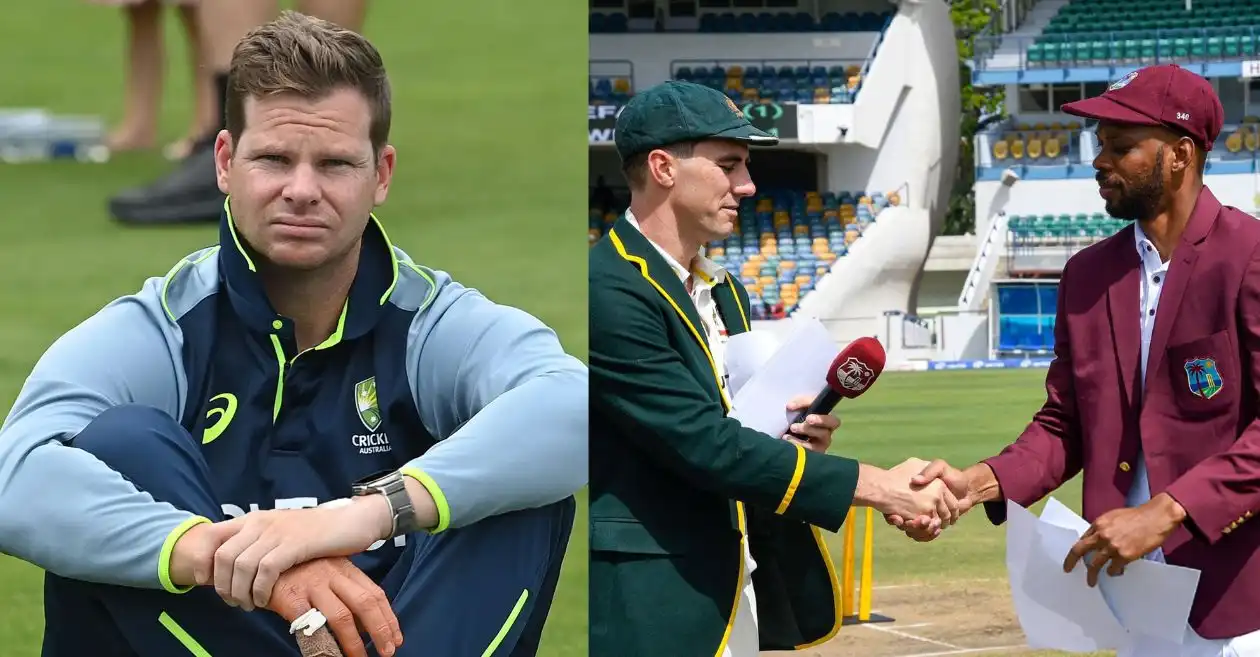Australia may soon welcome back one of their most prolific and dependable Test stars, as Steve Smith has offered a positive update on his fitness ahead of the second Test against the West Indies, scheduled to begin on July 3 at the National Cricket Stadium in Grenada.
The 36-year-old former captain, currently recovering from a dislocated finger, is optimistic about his return to the playing XI after missing the first Test in Bridgetown, which Australia won convincingly by 159 runs to take a 1–0 lead in the three-match series.
While Smith’s absence was well-covered by Australia’s robust middle order in Barbados, the potential return of a batter with his calibre, experience, and historical dominance over the Caribbean side will offer a significant boost for the touring team.
Steve Smith’s Recovery: “I Don’t Feel Any Pain Anymore”
Smith suffered the injury during the World Test Championship (WTC) 2023–25 Final at Lord’s, while attempting a sharp chance in the slips against South Africa. The dislocation led to immediate medical attention, and though he escaped surgery, the recovery period ruled him out of the Bridgetown Test.
Now, just a week away from the Grenada clash, Smith has declared that his batting is back on track, and his finger is showing signs of full recovery.
“For me, it’ll just feel like training as normal, I think,” Smith said in a media interaction, as quoted by ICC.
“I don’t really feel any pain or anything. It’s just getting used to the splint and the slight limited movement. It’s not too bad—I’ve got a lot of movement there now, so that feels good. Hitting the ball felt completely fine.”
Smith’s ability to return to full net sessions, including against both spin and pace, is a green flag for the Australian selectors, who are keen to have their talisman back ahead of a crucial series-defining Test.
Fielding Dilemma: A New Role for a Slip Cord Regular
While Smith sounded confident about his batting fitness, he did suggest that his fielding position could see a rare change.
Smith has long been a cornerstone of Australia’s slip cordon, particularly at second slip, where his reflexes and hands have pulled off some of the most iconic catches in Test cricket. But the demands of that position could pose a risk to his recovering finger.
“Fielding some balls in front of the wicket will probably be the strangest thing for me,” Smith admitted.
“I don’t think I’ve ever done that in a Test match. Fielding at either probably mid-on, mid-off, or even fine leg, is a bit different to standing at first or second slip.”
While the shift may be temporary, it could have wider tactical implications for Australia’s field setup and balance, particularly when operating with the new ball. With Smith temporarily stepping away from the cordon, Travis Head or Marnus Labuschagne could fill the vacant slip positions, as Australia reshuffle their close-in fielders.
Smith vs West Indies: A Record That Speaks Volumes
If selected, Smith’s return couldn’t be more perfectly timed—not just because of his experience but due to his astonishing record against the West Indies.
Steve Smith’s Test Record vs West Indies:
-
Matches: 8
-
Runs: 872
-
Average: 124.57
-
Hundreds: 3
-
Fifties: 3
-
Highest Score: 215
Smith has tormented the West Indian bowlers across venues—from the bouncy Gabba to the slow turners of Jamaica. His technique, which combines unorthodox movement with surgical shot placement, has often proved too much for an inexperienced Caribbean bowling attack.
In particular, his ability to handle both raw pace and subtle spin could be crucial in Grenada, where conditions are expected to assist the bowlers but also reward technically sound batters who can rotate strike and wear down attacks.
Australia’s Batting Shape with Smith’s Return
Australia’s first Test performance—especially from Travis Head, Beau Webster, and Marnus Labuschagne—was steady, though far from dominating. The top order faltered in both innings, and David Warner’s absence post-retirement is still leaving a gaping hole at the top.
Possible Batting Order with Smith:
-
Usman Khawaja
-
Cameron Green
-
Marnus Labuschagne
-
Steve Smith
-
Travis Head
-
Beau Webster
-
Alex Carey (wk)
-
Pat Cummins (c)
-
Nathan Lyon
-
Josh Hazlewood
-
Mitchell Starc
With Smith slotting back in at number four, Australia regain their rock—someone who can grind out long innings or shift gears as needed. His partnership with Labuschagne could also be a decisive factor in neutralizing West Indies’ Shamar Joseph–Jayden Seales pace combo, which was impressive in the first Test.
Australia Look to Seal Series, Smith to Stabilize
The series currently sits at 1–0 in favour of Australia, and while the visitors have looked the stronger outfit, the West Indies showed flashes of resilience in the first Test—particularly in the bowling department. Had it not been for missed opportunities and a few lapses in the field, the match might have gone deeper.
Australia’s focus now will be on sealing the series in Grenada, and Smith’s inclusion is a step in that direction. Head coach Andrew McDonald and captain Pat Cummins have both hinted at managing workloads, especially with a packed calendar coming up. But a fit Smith is too valuable a resource to be left out, especially in a potential series clincher.
West Indies Watch: What Smith’s Return Means for Them
For Roston Chase’s West Indies, Smith’s return is a double-edged sword. On one hand, it provides a target for their bowling unit to test a recovering player; on the other, it brings back a nemesis who has historically dominated them.
Seales and Joseph will have to change angles, attack the stumps, and perhaps bowl short-pitched spells early to see if Smith’s finger can handle the pressure. Off-spinner Rahkeem Cornwall, if selected, could also be used to test Smith’s reflexes close to the bat.
Grenada Awaits: What to Expect from the Pitch
The National Cricket Stadium in Grenada has a history of being a low-bounce, slow-turner that gets progressively tougher for batting as the game wears on. Batters who succeed here tend to be:
-
Patient against the new ball
-
Proficient against spin
-
Able to rotate strike on low-bounce tracks
Smith ticks all these boxes.
Australia’s challenge will be to adapt from the lively surface of Barbados to a slower, more grinding type of wicket. The return of Smith could be just what the team needs in this scenario.
Smith’s Return a Psychological Boost and Tactical Win
While the numbers speak for themselves, the intangible impact of Steve Smith’s return cannot be overstated. He brings calm in chaos, clarity in doubt, and an aura of inevitability that can break opposition morale even before he gets going.
In a series that is still alive despite Australia’s first-Test win, Smith’s presence offers:
-
Stability in the middle order
-
Strategic leadership on and off the field
-
A psychological edge over a young West Indies side
If he can withstand the rigours of fielding outside his comfort zone and manage the demands of a full five-day match, expect Smith to once again become the axis around which Australia’s innings revolve.
As the teams head to Grenada, fans and pundits alike will be watching closely—not just to see Australia aim for another series win, but to witness one of Test cricket’s modern masters return to his stage.
Second Test: Key Info
-
Date: July 3–7, 2025
-
Venue: National Cricket Stadium, Grenada
-
Series Score: Australia lead 1–0
-
Match Start Time: 10:00 AM local time / 7:30 PM IST
Will Smith pick up where he left off against the West Indies? Or will the hosts rewrite history in Grenada?
Either way, July 3 promises the next chapter in a gripping Test series—and the long-awaited return of a cricketing titan.
Related posts:
 Sunil Narine opens up on his T20 World Cup return after performing exceptionally well in IPL 2024
Sunil Narine opens up on his T20 World Cup return after performing exceptionally well in IPL 2024
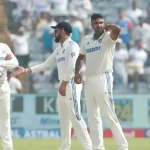 Here’s how South Africa’s win over Bangladesh in the first Test complicates India’s path to WTC 2023-25 final
Here’s how South Africa’s win over Bangladesh in the first Test complicates India’s path to WTC 2023-25 final
 WBBL 2024: Nicola Carey shines in Hobart Hurricanes’ vital win over Sydney Thunder
WBBL 2024: Nicola Carey shines in Hobart Hurricanes’ vital win over Sydney Thunder
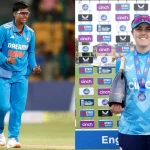 ICC Women’s ODI Rankings: Deepti Sharma climbs new peaks in bowling; Nat Sciver-Brunt retains her No.1 batting spot
ICC Women’s ODI Rankings: Deepti Sharma climbs new peaks in bowling; Nat Sciver-Brunt retains her No.1 batting spot
 Tottenham stage second-half comeback to crush Aston Villa
Tottenham stage second-half comeback to crush Aston Villa
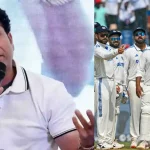 Sachin Tendulkar and other legends lambast Team India following a 3-0 whitewash by New Zealand in the Test series
Sachin Tendulkar and other legends lambast Team India following a 3-0 whitewash by New Zealand in the Test series
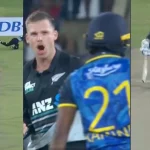 SL vs NZ : Lockie Ferguson’s hat-trick against Sri Lanka in the 2nd T20I
SL vs NZ : Lockie Ferguson’s hat-trick against Sri Lanka in the 2nd T20I
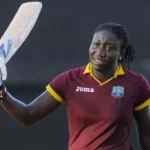 West Indies announce squad for India tour; Stafanie Taylor out, Deandra Dottin returns to ODIs
West Indies announce squad for India tour; Stafanie Taylor out, Deandra Dottin returns to ODIs
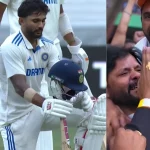 Nitish Kumar Reddy’s father in tears as his son smashes maiden Test hundred for India on Day 3 of MCG Test
Nitish Kumar Reddy’s father in tears as his son smashes maiden Test hundred for India on Day 3 of MCG Test
 Top 5 fastest ODI hundreds for India in women’s cricket ft. Smriti Mandhana
Top 5 fastest ODI hundreds for India in women’s cricket ft. Smriti Mandhana
 Top 5 run-scorers in ODI cricket post 2017 Champions Trophy ft. Virat Kohli
Top 5 run-scorers in ODI cricket post 2017 Champions Trophy ft. Virat Kohli
 DEL-W vs UP-W, Women’s Premier League 2025: Match Prediction, Dream 11 Team, Fantasy Tips and Pitch Report | Delhi Capitals vs UP Warriorz
DEL-W vs UP-W, Women’s Premier League 2025: Match Prediction, Dream 11 Team, Fantasy Tips and Pitch Report | Delhi Capitals vs UP Warriorz
 Sunil Gavaskar lambasts Shama Mohamed for her body shaming remarks on Rohit Sharma
Sunil Gavaskar lambasts Shama Mohamed for her body shaming remarks on Rohit Sharma
 Virat Kohli touches the feet of Mohammad Shami’s mother in a heartwarming gesture after India’s Champions Trophy 2025 win
Virat Kohli touches the feet of Mohammad Shami’s mother in a heartwarming gesture after India’s Champions Trophy 2025 win
 Delhi Capitals (DC) announces a new vice-captain ahead of IPL 2025
Delhi Capitals (DC) announces a new vice-captain ahead of IPL 2025
